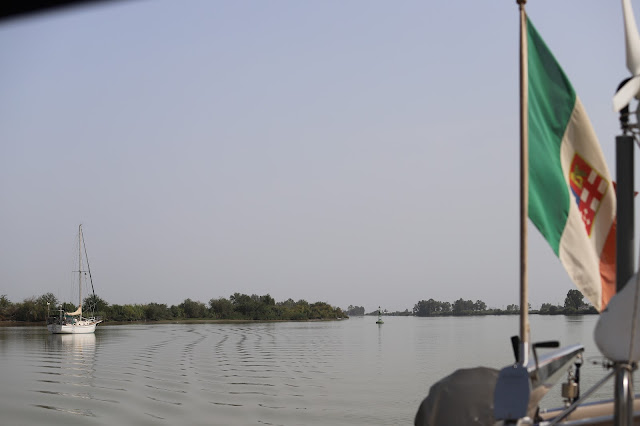August 2021- Guadalquivir sailing up to Seville
The navigation of the Guadalquivir is not binding but must be planned carefully by contacting the:
Port Authority of Seville, T +34 954 24 73 00 - puertodesevilla@apsevilla.com
The port authority releases all the informations relating the tides and relative timetables to be respected for navigation up to the first dam lock (buoy n.72) where you must arrive on time in the late evening for the dam to open and then continue the navigation to the drawbridge entrance to the center of Seville.
It's a full day of motoring because sailing is prohibited.
The peculiarity of this navigation is to plan well your average speed in order to be able to arrive at the locks and the drawbridge at the booked times. In fact it is forbidden to anchor on the entire course of the river!
Once you leave the last town, Bonanza, the navigation develops in the splendor of the Parque Nacional del Estoario del Guadalquivir.
Few encounters with other boats. Only at the lock where we met a large cargo which forced us to leave the marked channel, which made grounding the muddy bottom but without problems or damage.
Just after the drawbridge that is opened exclusively for us, the city of Seville opens up with its lights and architecture in the Arab-Andalusian style.
Contact https://clubnauticosevilla.com/ to book a berth with electricity connection.
Plan at least 3 nights because 2 full days are the minimum to visit the beautiful Andalusian capital.












Comments
Post a Comment
I am sailing let me some time to answer you.
Thks